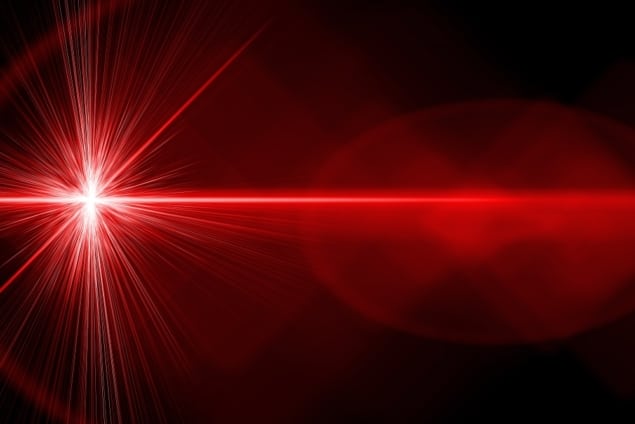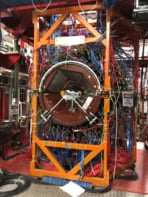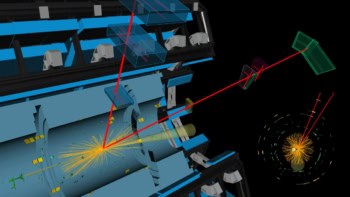
A new way of creating femtosecond, quasi-monoenergetic gamma-ray pulses has been proposed by Serge Kalmykov at the University of Nebraska-Lincoln and colleagues. Their scheme involves using a stack of lasers to create pulses of electrons, which then produce gamma rays through Thomson scattering. Laser-driven gamma-ray sources could have a wide range of applications including nuclear forensics and radiation physics.
When a relativistic electron collides with a near-infrared photon, some of the electron’s kinetic energy can be imparted to the photon via Thomson scattering. For a 900 MeV electron colliding head-on with a 1.5 eV near-infrared photon, for example, the photon is converted to a 19 MeV gamma ray.
Compact, low-cost solution
As a result, pulses of gamma rays can be created by firing electron pulses at pulses of near-infrared laser light. Gamma-ray pulses lasting just a few picoseconds have already been made using electrons from conventional accelerators. However, these accelerators are large and expensive and, because of their design, cannot create pulses of sub-picosecond duration
Writing in the New Journal of Physics Kalmykov and colleagues point out that laser-plasma accelerators (LPAs) can create sub-picosecond (femtosecond) pulses of electrons, and therefore offer a way of making ultrashort gamma-ray pulses. LPAs involve firing ultrashort, intense laser pulses at a plasma cavity, accelerating electrons to energies normally associated with conventional particle accelerators.
While LPAs offer a way forward, the physicists point out that there are challenges that must first be overcome. In the Thomson scattering process, the electrons are much more energetic than the gamma-ray photons they produce. Therefore, the energy spectrum of the gamma rays is highly sensitive to the energy profile of the electron pulses. This is a problem because the electron pulses produced by LPAs tend to develop a broad range of energies as they travel through the plasma cavity. This results in gamma-ray pulses with broad energy distributions – something that is incompatible for practical applications. Another important challenge is that the lasers of today are simply not capable of delivering the power required to create a practical gamma-ray source.
Stack of lasers
Using simulations, Kalmykov and his colleagues have shown that these problems can be solved by using a stack of several different pulse lasers – each generating light at different wavelengths with modest energy outputs of about a joule per pulse. The research suggests that having tight control over the time delay, frequency difference, and energy ratio of each individual laser as it fires into the cavity, the system can produce focused gamma-ray pulses with a narrow spectrum of photon energies.
If such a system could be built, it would allow for applications including nuclear forensics, which require monoenergetic gamma radiation to investigate the atomic constituents of samples. It could also be useful for use in radiation physics, which is concerned with the interactions between radiation and matter.



